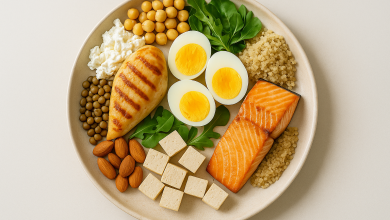A prehistoric diet for the modern age
Editorial Feature
The only time it’s acceptable to act like a caveman is through your diet, but is this hunter-gatherer regime right for you?
It’s not often we’re encouraged to act like neanderthals, or take earlier, less-evolved species of man as role models, but the Paleo diet – so named for the Paleolithic era, where such fitspo influencers thrived – promotes rewinding the clock 10,000 to 2.5million years for lifestyle inspiration. The Paleo diet plan is based on what our ancestors might have eaten, including lots of lean meats, fish, fruit and vegetables, nuts and seeds. In short, things that could have been foraged or hunted, then dragged back to a cave. Whether you overindulge at Christmas, or just like to see every new year as a fresh fitness start, this diet might hold the secret to shedding a few extra pounds.
The theory behind the Paleo diet is that the human body is not physiologically equipped to cope with modern-day manufactured foods. It claims that evolution has not had the time to catch up with the rapid boom in agricultural practices that has taken place in recent centuries, and that we are anatomically and genetically incompatible with 21st century food. The rise of dairy, legumes and grains as pillars of an average Western diet transformed the way humans eat, digest and store our fats and fibres. Champions of Paleo point to rocketing rates of diabetes, obesity and other diet-related health conditions as evidence that we should return to nature, pursuing the diet of our distant ancestors. Paleo’s strict rules can help aid the body in preventing these conditions, by cutting out some of their major contributors.
So what can and can’t you eat on this primitive diet? Grains like wheat, barley and oats are out, as are legumes like lentils, peanuts and beans. You can kiss goodbye to chocolates, cheeses and milk in your tea, as Paleo also forbids any dairy products. It also removes highly processed foods, refined sugar, salt and potatoes. This leaves the aspiring hunter-gatherer with lean meats (with a preference on grass-fed animals) and fish rich in omega-3 fatty acids. Nuts and seeds, vegetables and fruits are still on the menu, too. The switch to paleo can help with weight loss, but also improve glucose tolerance and help control blood pressure. If you are able to quell dairy snack cravings and ditch processed foods, your overall health and caveman credentials are likely to improve on Paleo.
The downsides to the diet – aside from a ban on chocolate biscuits – are a little trickier to assess. No adequate studies exist to provide solid evidence of Paleo’s long-term impact on the body, but there are concerns that, without the necessary supplements to support the diet, the body may end up deficient in calcium and vitamin D. The increase in saturated fats and proteins may also have a negative impact on the body.
To see your company in any upcoming features we are arranging please email laura@hurstmediacompany.co.uk or editorial@hurstmediacompany.co.uk






